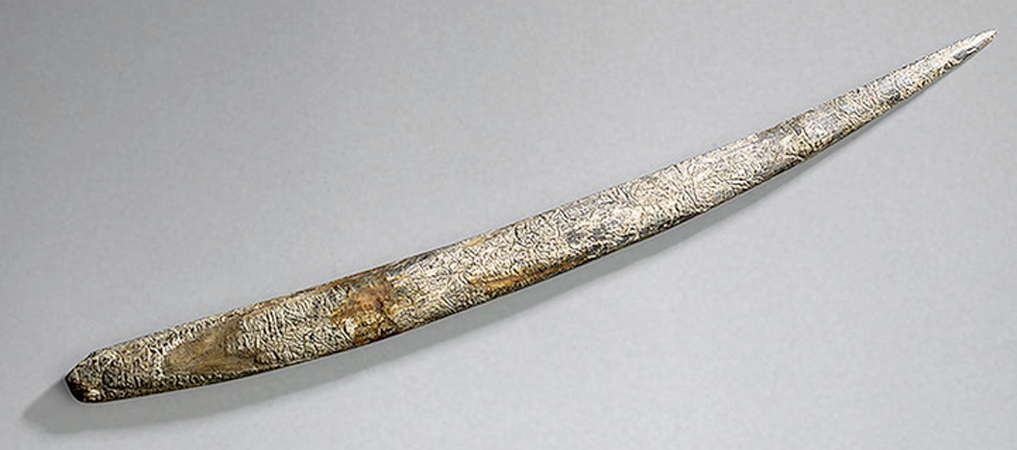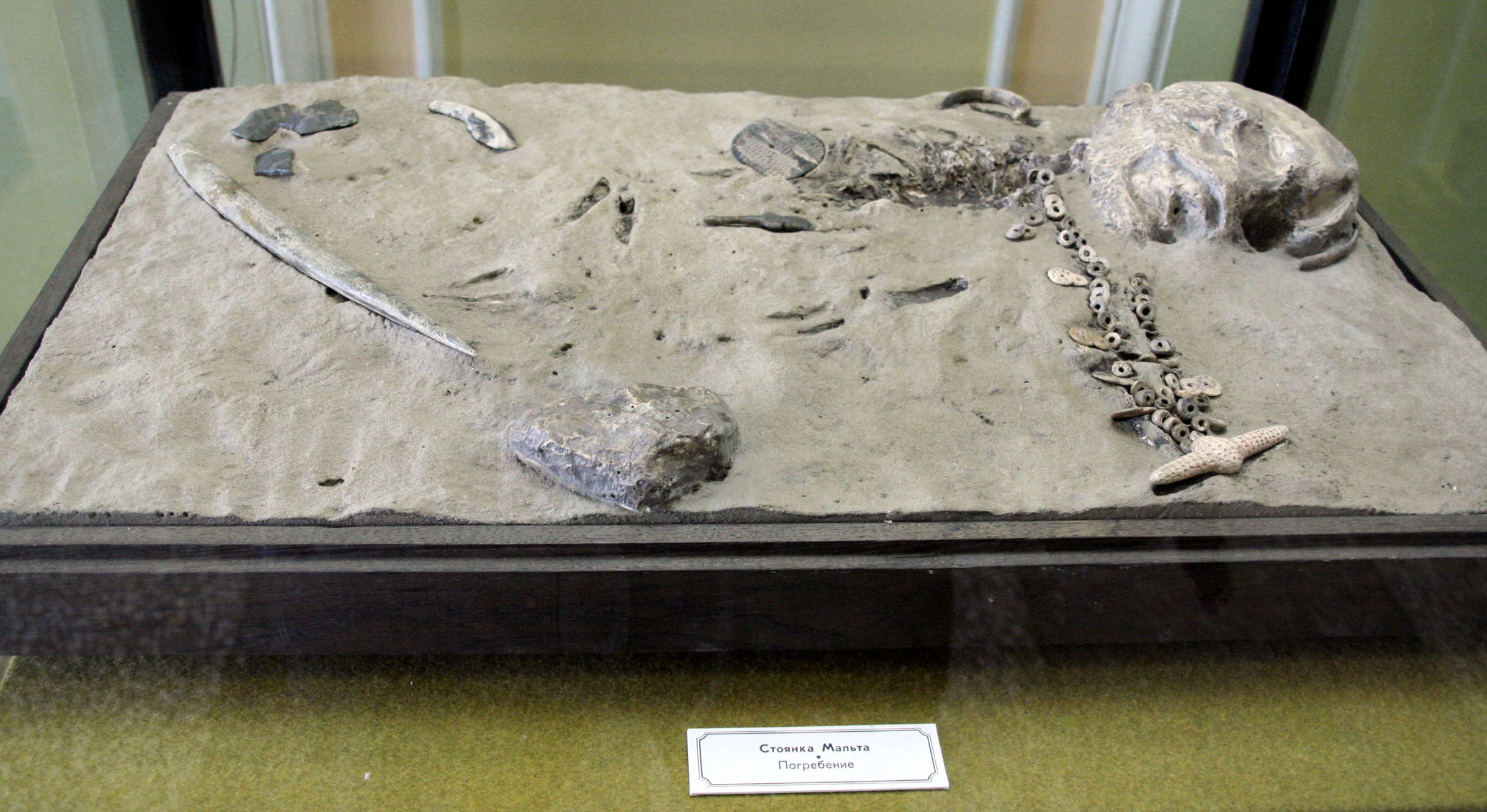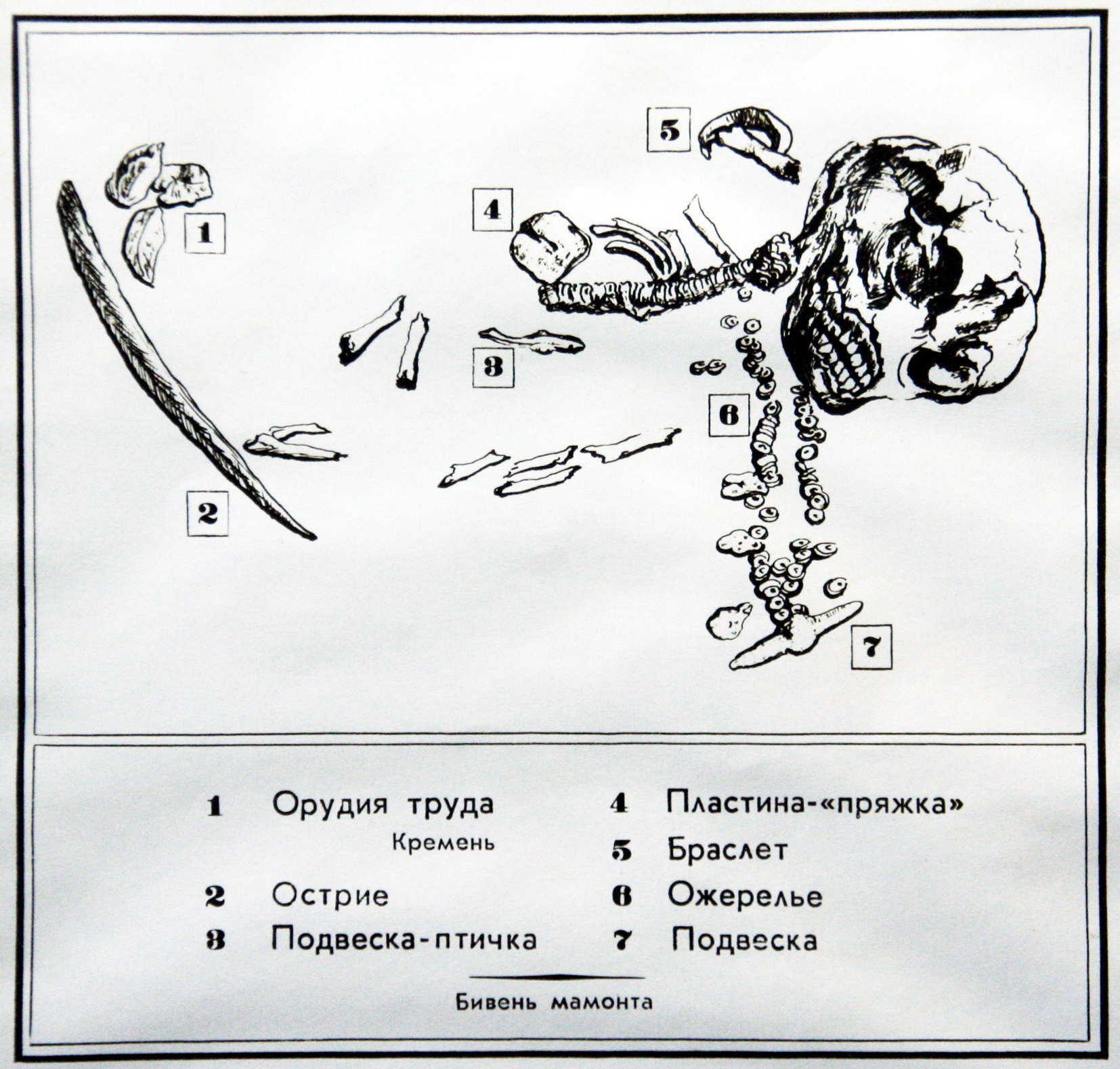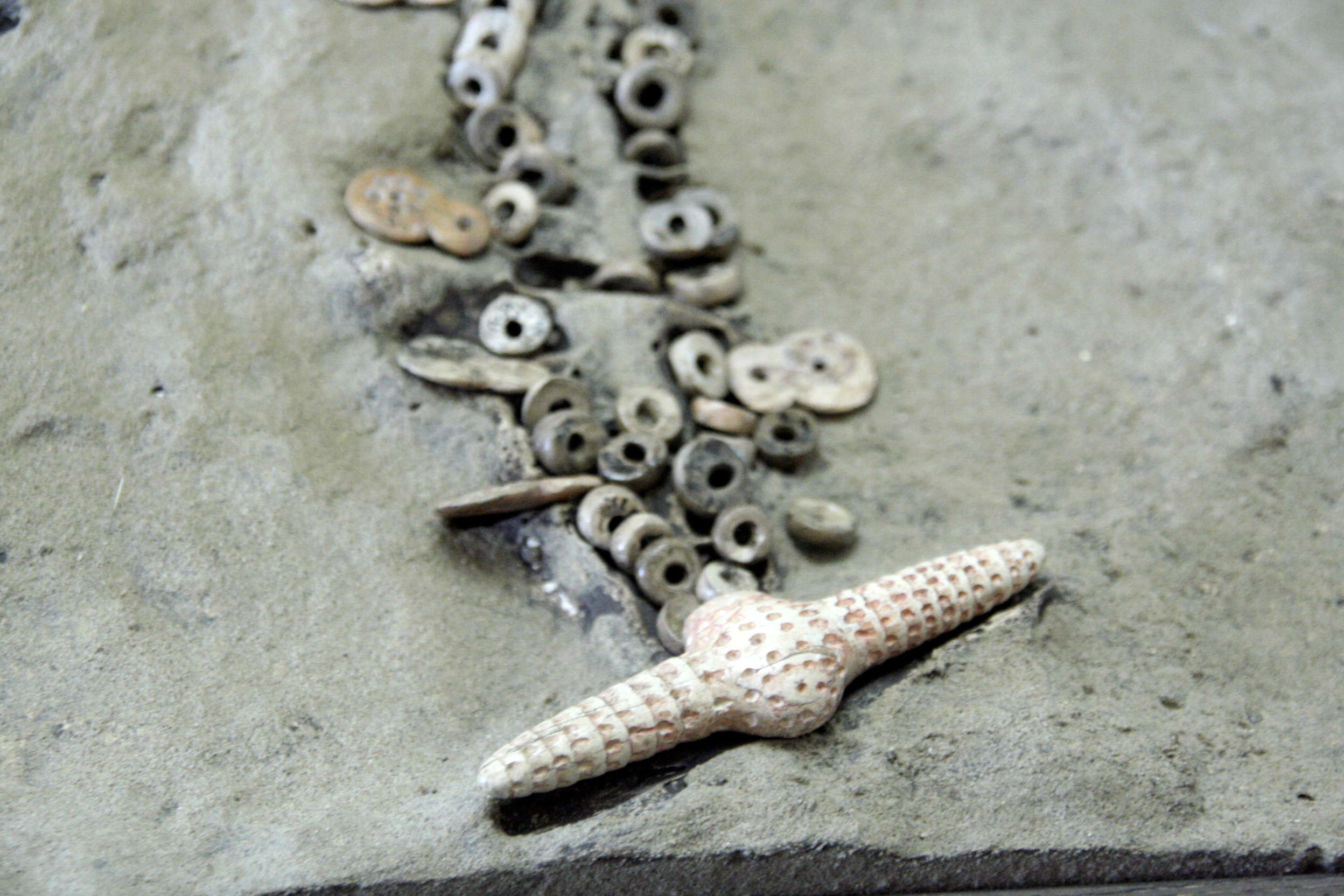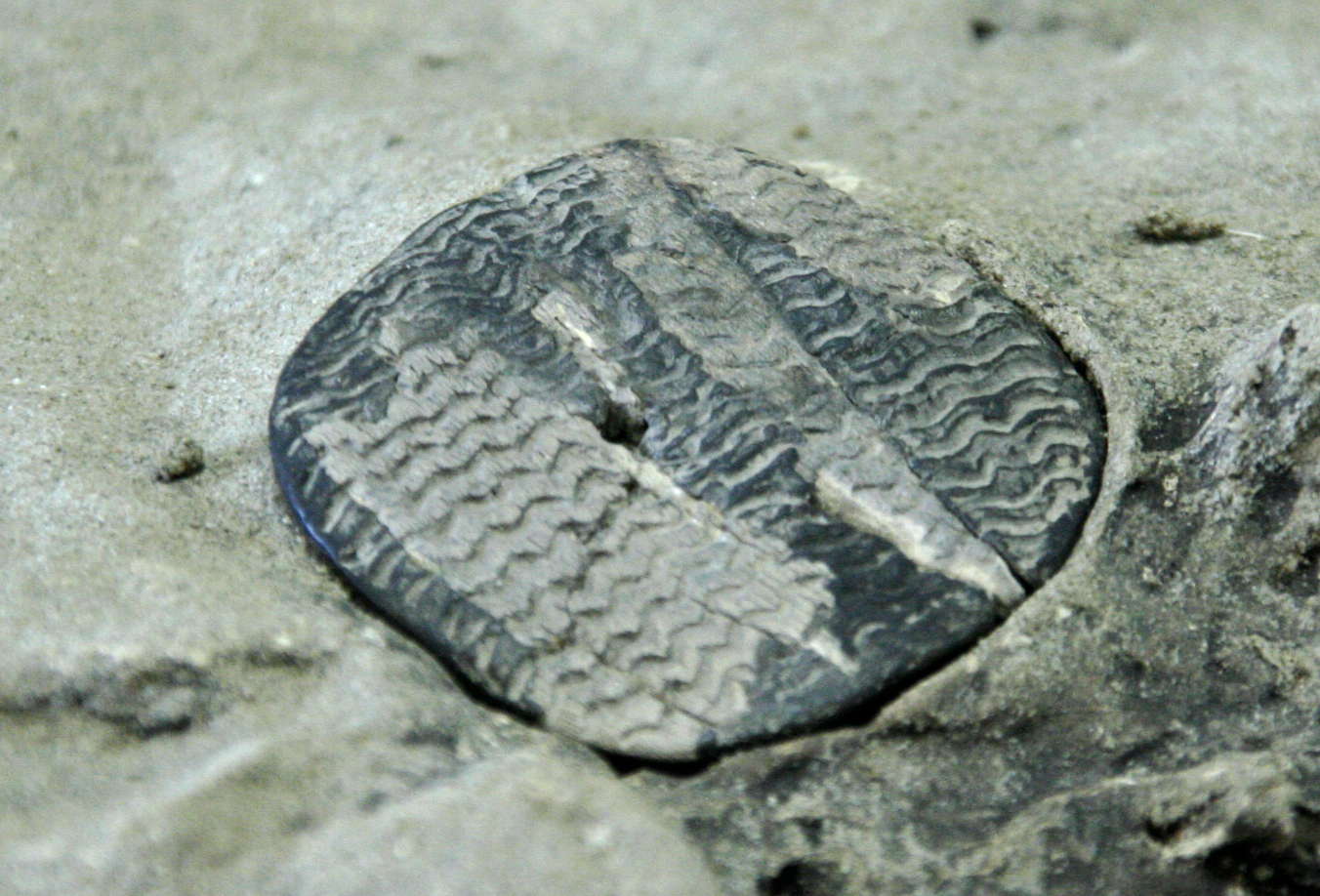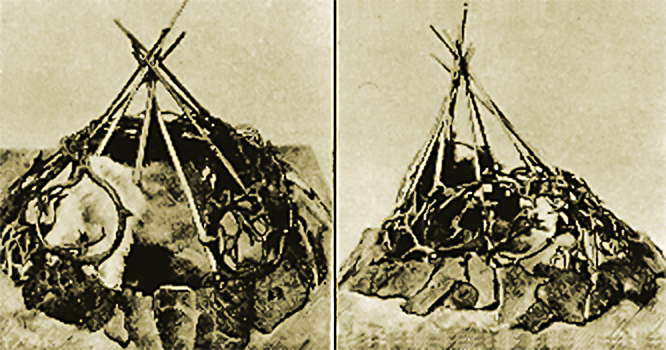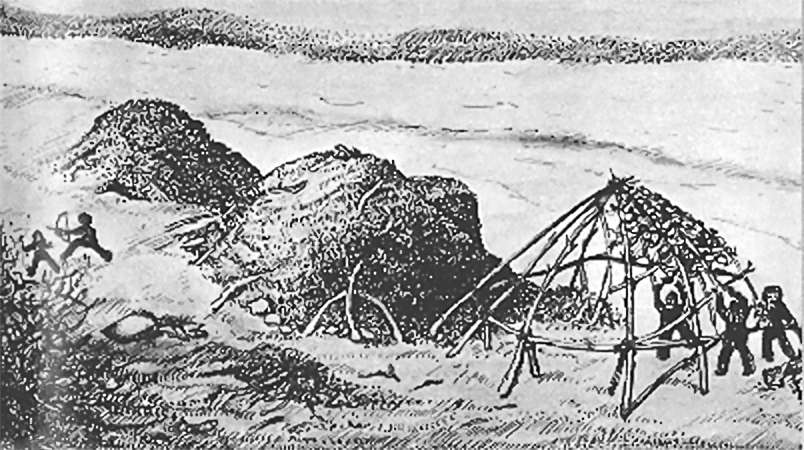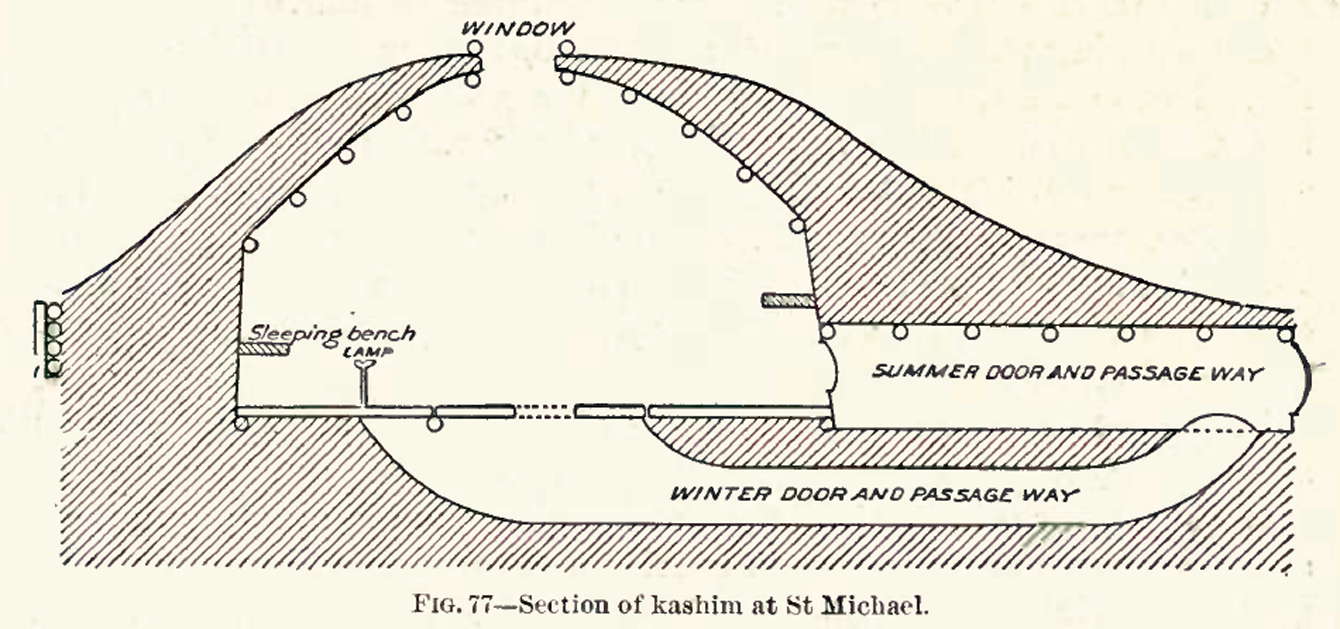SANTA FE—Where did the first Americanscome from? Most researchers agree that Paleoamericans moved across the Bering Land Bridge from Asia sometime before 15,000 years ago, suggesting roots in East
Asia. But just where the source populations arose has long been a mystery. Now comes a surprising twist, from the complete nuclear genome of a Siberian boy who died 24,000 years ago-the oldest complete genome of a modern human sequenced to date. His DNA shows close ties to those of today's Native Americans. Yet he apparently descended not from East Asians, but from people who had lived in Europe or western Asia. The finding suggests that about a third of the ancestry of today's Native Americans can be traced to western Eurasia with the other two-thirds coming from eastern Asia,according to a talk at a meeting here by ancient DNA expert Eske Willerslev of the University of Copenhagen. It also implies that traces of European ancestry previously detected in modern Native Americans do not come solely from mixing with European colonists, as most scientists had assumed, but have much deeper roots."I'm still processing that Native Americans are one-third European, says geneticist Connie Mulligan of the University of Florida in Gainesville. It's jaw-dropping. "At the very least", says geneticist Dennis O'Rourke of the University of Utah in Salt Lake City, "this is going to stimulate a lot of discussion". Researchers have been trying to parse the origins of the First Americans for decades. Most agree that people moved across Beringia, via a vast ice age land bridge (see map p. 410), and began spreading through the Americas, reaching Chile by 14,500 years ago. But the origins of the source populations are not clear, and some archaeologists have even suggested that ancient Europeans crossing the Atlantic were part of the mix (Science, 16 March 2012, p. 1289). Others have contended that early skeletons found in the Americas, such as the 9000-year-old Kennewick Man, show some European features (Science, 10 April 1998, p. 190). In his talk, Willerslev argued that the ancient genome "can actually explain a lot of these inconsistencies," by offering glimpses of prehistoric populations before more recent migrations and other demographic events blurred the picture.The genome comes from the right upper arm bone of a boy aged about 4 years, who lived by Siberia's Belaya River.Those who buried him adorned his grave with flint tools, pendants, a bead necklace, and a sprinkling of ochre. In the 1920s, Russian archaeologists discovered
the burial and other artifacts near a village called Mal'ta, which gave the celebrated site its name. Willerslev and co-author Kelly Graf of Texas A&M University in College Station, traveled to the State Hermitage Museum in St. Petersburg, Russia, where the boy's remains are housed, and took a bone sample. Willerslev reported that the team was able to sequence the boy's genome, and also to radiocarbon date the bone. The team then used a variety of statistical methods to compare the genome with that of living populations.
They found that a portion of the boy's genome is shared only by today's Native Americans and no other groups, showing a close relationship. Yet the child's Y chromosome belongs to a genetic group called Y haplogroup R, and its mitochondrial DNA to a haplogroup U. Today, those haplogroups
are found almost exclusively in people living in Europe and regions of Asia west of the Altai Mountains, which are near the borders of Russia, China, and Mongolia. One expected relationship was missing from the picture: The boy's genome showed no connection to modern East Asians. DNA studies of living people strongly suggest that East Asian's- perhaps Siberians, Chinese,or Japanese- make up the major part of Native American ancestors. So how could the boy be related to living Native Americans, but not to East Asians? "This was kind of puzzling at first," Willerslev told the meeting. But there seemed little doubt that the finding was correct, he said, because nearly all Native Americans from North and South America were equally related to the Malíta child, indicating that he represented very deep Native American roots.
The team proposes a relatively simple scenario:
Before 24,000 years ago, the ancestors of Native Americans and the ancestors of today's East Asians split into distinct groups. The Malíta child represents a population of Native American ancestors who moved into Siberia, probably from Europe or west Asia. Then, sometime after the Malíta boy died, this population mixed with East Asians. The new, admixed population eventually made its way to the Americas.
Exactly when and where the admixture happened is not clear, Willerslev said. But the deep roots in Europe or west Asia could help explain features of some Paleoamerican skeletons and of Native American DNA today. "The west Eurasian [genetic] signatures that we very often find in today's Native Americans donít all come from postcolonial admixture", Willerslev said in his talk. "Some of them are ancient." The talk sparked lively exchange, and not everyone was ready to buy the team's scenario, at least until they can read the full paper, which is in press at Nature. "This is a lot to hang on one skeleton," Mulligan says. Willerslev said during the discussion that his group is now trying to sequence the genomes of skeletons "further west."
The new findings are consistent with a report published in Genetics last year (and almost entirely ignored at the time) that used modern DNA to conclude that Native Americans have significant-and ancient-ties to Europeans. "Our group is very excited to see this," says Alexander Kim, who works with geneticist David Reich at Harvard Medical School in Boston and represented the group at the meeting.
Reich's team found that populations they identified as Native American ancestors in Asia apparently also contributed genes to populations in northern Europe. Thus, both studies suggest a source population in Asia whose genes made their way east all the way to the Americas, and west, all the way to Europe."Malíta might be a missing link, a representative of the Asian population that admixed both into Europeans and Native Americans," Reich says. If so, he adds, it shows "the value of ancient DNA in peeling back history and resolving mysteries that are difficult to solve using only present day samples.
MICHAEL BALTER
http://m.sciencemag.org/content/342/6157/409.full.pdf
Charlie Hatchett
[
www.pre-clovis.com]
[
www.forum.pre-clovis.com]
[
www.blog.pre-clovis.com]







